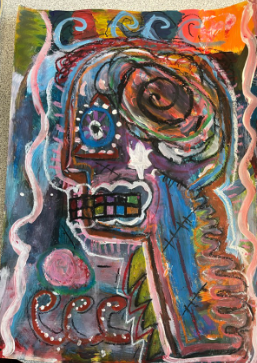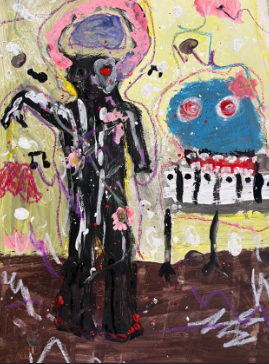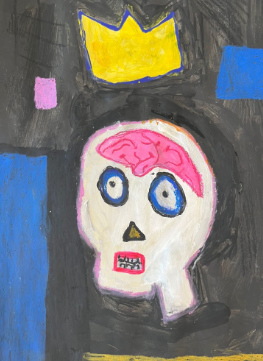Art and Design
Intent:
At Nottingham Academy we believe that art is a vital part of children’s education, with children having the opportunity to develop a range of skills and knowledge throughout their art journey in school, allowing children to discover a lifelong interest and talent in this area. The art curriculum will develop children’s artistic abilities and creativity, as well as an understanding of a range of artists, styles of art and art periods.
Children will develop their disciplinary knowledge around art as they are encouraged to think and talk like as artist, as they develop their own ideas and evaluate the own and other's work. Understanding of the seven elements of art and design (line, space, texture, colour, value, shape, form) will be developed by providing a curriculum which is progressive and well sequenced to enable children to reach their full potential. Strong cross curricular links ensure children have the opportunity to apply knowledge and deepen understanding through the context of art.
Implementation:
Substantive and disciplinary knowledge
Substantive knowledge is the development of the formal elements (line, space, texture, shape, colour, form, value) by introducing and experiencing a wide range of media, using associated key vocabulary and knowing the work and techniques of a wide range of artists, craftspeople and designers. The children will work through a range of disciplines: drawing, painting, printing, texture, collage and 3D form/ sculpture in order to explore the 7 elements. Substantive knowledge is also the knowledge of known artists, their style and period of art.
Disciplinary knowledge is creatively thinking of possibilities, making comparisons, questioning and critiquing, reaching judgements, addressing challenges and reflecting on the impact of works of Art and Design produced independently, collectively and by others. Children will also be expected to present outcomes verbally and in written form.
Both substantive and disciplinary knowledge is detailed on our school progression documents. Teachers use this document to plan a well sequenced unit of work.
- The National Curriculum and GAT Early Years progression framework have informed the development of our detailed progression documents.
- Art topics are based around the work of artist or linked to a theme in another area of the curriculum. For example, making Stone-Age jewellery using clay to support history or producing detailed drawings linked to evolution in Science.
- The understanding of technical and practical knowledge has been carefully sequenced to build year-on-year. This is clearly outlined in our Progression of the Areas of Art document below.
- Children are taught to express their creative imagination as well as provide them with the opportunities to practice and develop mastery of the key processes of art.
- Children study artists from a range of time periods from prehistoric through to contemporary art, with a range of art styles incorporated into this. The full outline of the artists studied can be found below.
- Our Sticky Knowledge for art outlines the key knowledge that we want our children to know and remember from each unit of work, this incorporates the knowledge of artists and the knowledge of techniques and processes needed for the unit of work. The Sticky Knowledge for each year group can be found using the link below.
- As with all of our non-core subjects, teachers plan a sequence of learning following the structure below:
-
 LINK IT! Using our school progression documents, teachers consider links to prior learning in order for children to build on what they already know.
LINK IT! Using our school progression documents, teachers consider links to prior learning in order for children to build on what they already know. LEARN IT! Teachers plan and deliver engaging and meaningful learning opportunities with explicit teacher modelling, opportunities for children to think and talk like an artist, practice a range of art skills, collaborate and think critically and creatively.
LEARN IT! Teachers plan and deliver engaging and meaningful learning opportunities with explicit teacher modelling, opportunities for children to think and talk like an artist, practice a range of art skills, collaborate and think critically and creatively.  CHECK IT! Teachers plan for opportunities to review and check learning each lesson to ensure adaptations can be made to the next lesson.
CHECK IT! Teachers plan for opportunities to review and check learning each lesson to ensure adaptations can be made to the next lesson.  SHOW IT! At the end of a unit of work, children will have produced a piece of art work linked to an artist or curriculum theme by applying the skills they have been taught within the unit.
SHOW IT! At the end of a unit of work, children will have produced a piece of art work linked to an artist or curriculum theme by applying the skills they have been taught within the unit.  KNOW IT! A short quiz or class discussion allows the children to demonstrate what they know and remember about their artist, style, processes and techniques used.
KNOW IT! A short quiz or class discussion allows the children to demonstrate what they know and remember about their artist, style, processes and techniques used. -
It is up to our teacher’s discretion, experience, and judgement to plan a block of lessons, a whole day of art or on a weekly basis, in order to ensure good coverage of the knowledge and skills in each unit of work.
-
In EYFS the children have daily access to a variety of media and materials which they can explore to produce their own creative work. Provision is carefully planned to suit the interests of the children, whilst developing the necessary skills they are working on. Through on-going observations of the children, the adults have an in-depth knowledge about each child’s development. This ensures that the adults facilitating learning know each child’s next steps and can give the children the learning opportunity and experience they need to develop their skills in art.
-
Our Primary Art Gallery is developing, which celebrates exceptional art work produced across school and showcases the emerging talent of our pupils.
-
Parents are invited to our regular curriculum showcase events, which feature the 'show it' pieces of work from year groups linked to their current learning- many of which are linked to art.
-
Our weekly assemblies begin with an Artist of the week, where children look at and share ideas and views on a range of artists and art genre.
Impact:
- Pupil voice demonstrates that children enjoy art in our school
- Children feel proud of the artwork they create and are able to talk about the techniques and processes they have gone through to create it.
- The artwork produced at the end of each unit of work demonstrates a clear progression of skills throughout school.
- Children gain knowledge about a variety of artists and are able to talk about their styles and processes.
- Sketchbooks show how children ae given opportunities to practice a range of skills and techniques.
- Sticky Knowledge documents support teachers in the delivery of high quality art units of work.
- Strong cross-curricular links allow children to transfer knowledge across subjects and use art to represent their learning within a creative context.
Black History Month 2024
At Nottingham Academy, we are committed to celebrating diversity and promoting cultural awareness. To celebrate Black History Month this year, the children explored the achievements of several inspirational black artists and learnt about their contributions to the world of art and culture.
Children had the opportunity to produce their own artwork inspired by the styles and techniques of the artists they studied. This creative week not only deepened their understanding of diverse artists, but also allowed them to express their own ideas and talents through art.
EYFS
Children in EYFS learnt about the talented black artist Alma Thomas, who was an African-American artist and teacher. The children loved her bold patterns and vivid colours.

The children worked collaboratively to print using their fingers to create an excellent replica of her artwork.
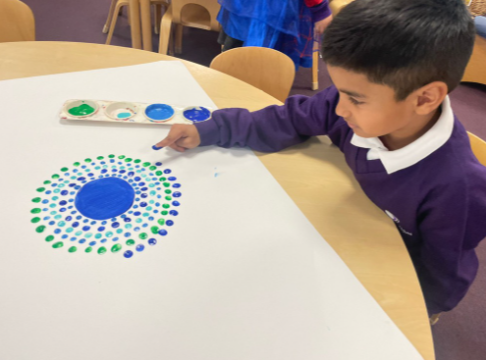

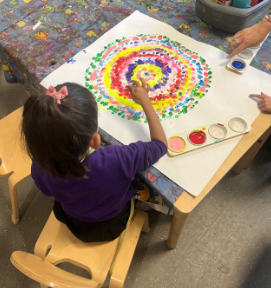

Year 1
The children in Year 1 learnt about Joseph Gee who owned a cotton plantation and employed slaves to sew quilts with bold patterns, shapes and colours. The quilts of Gee's Bend are created by a group of women and their ancestors that live in the isolated African-American hamlet of Gee's bend.

The children practised printing with shapes before transferring their skills to printing with fabric paint onto fabric. They chose bold colours and large shapes to create their quilt in the same style. The children watched as Ms Robinson sewed it all together. What a masterpiece!

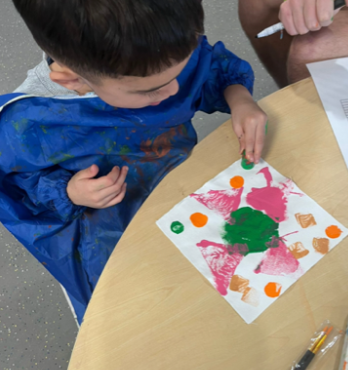
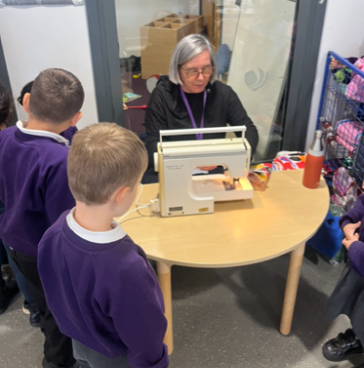
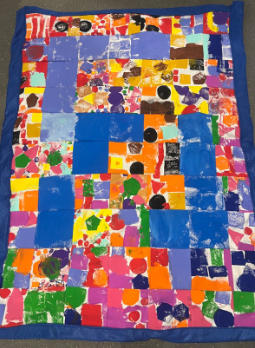
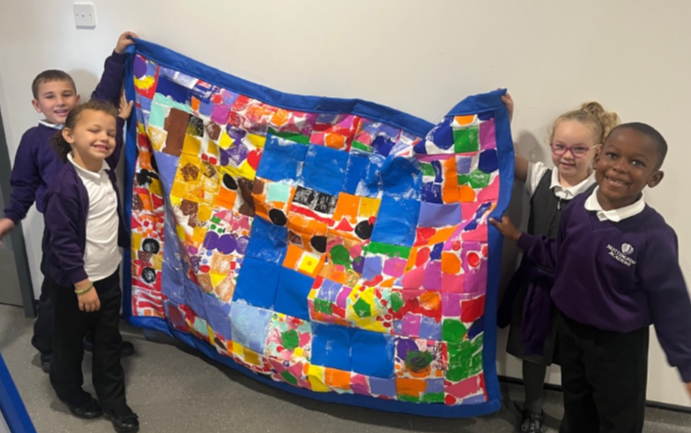
Year 2
The children in Year 2 have learnt about the Jamaican artist, Bernard Hoyes, who's paintings often represent Jamaican dancing. The children loved his bold and vivid colours and how he created a sense of movement and rhythm through curved lines.

Children practised drawing ovals for faces and curved lines to create movement. They also practised mixing colours to create skin tones.
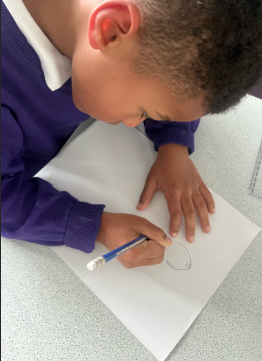
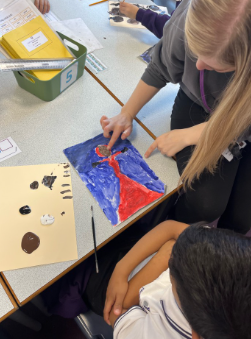
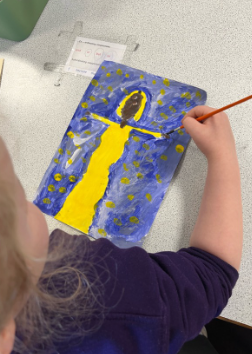

Year 3
The children in year 3 enjoyed learning about the talented artist, Kimmy Cantrell. They explored the vivid abstract masks he creates and noticed the unique shapes and bright colours he uses in his work.
The children evaluated his work and then began to design their own masks before practising cutting and layering the shapes on paper. They created their final pieces using card, paint and pastels. We are so proud of the results.
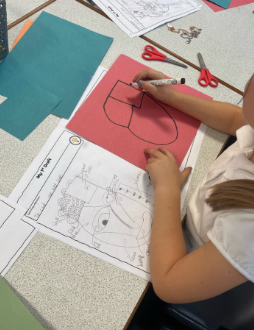
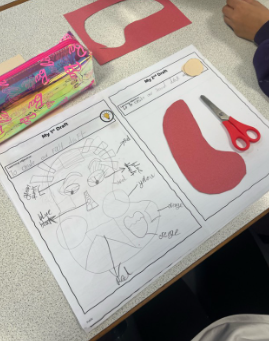

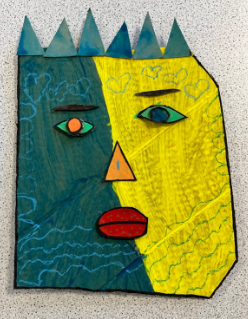
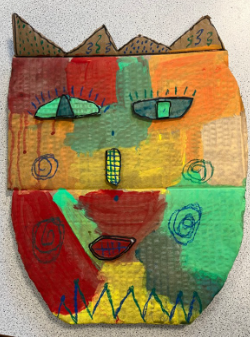
Year 4
The children in Year 4 have studied the amazing murals by Lakwena Maciver, whose vivid murals carry positive and powerful messages.
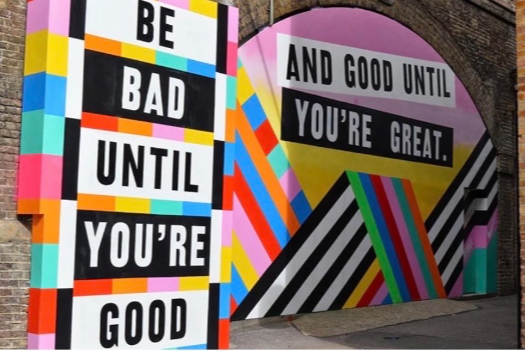
The children explored media and techniques needed for effective colour blocking and designed their own positive messages using WordArt. We think these look so effective.

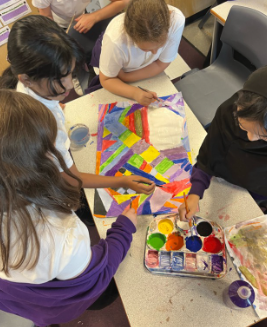
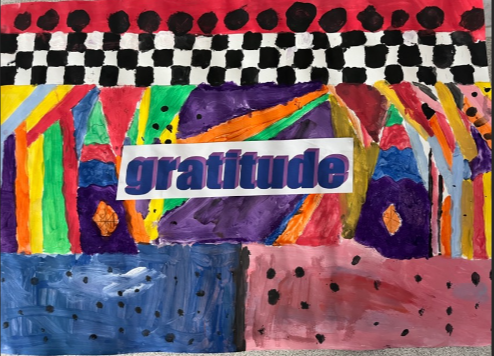
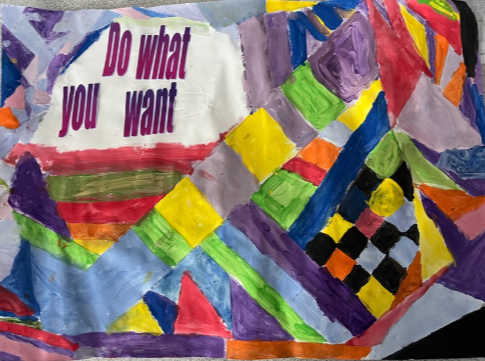

Year 5
Children in Year 5 enjoyed learning about the incredible work of artist Lois Jones, who was a prolific American artist, educator, and champion and mentor of African American artists.
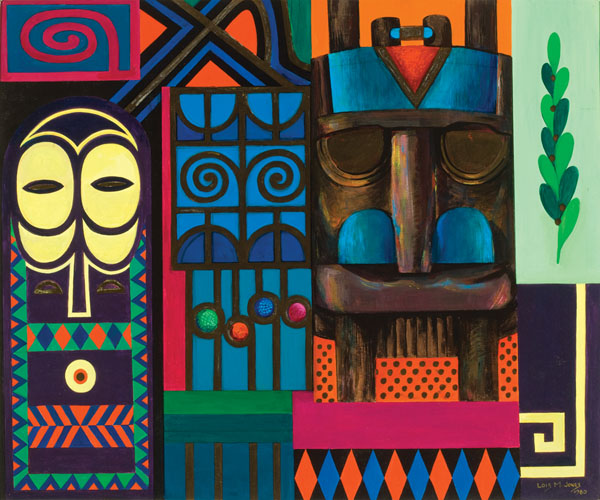
The children used a variety of media to create work in her style. Using paint to colour block and clever layering of carefully cut shapes, as well as pastels to add detail, the children have created some impressive replicas of her unique style.
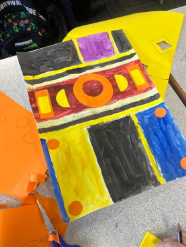


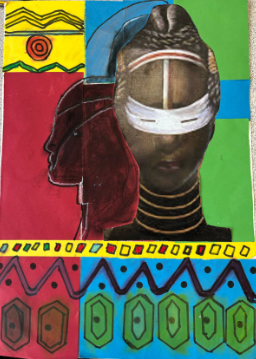
Year 6
The children in Year 6 have explored the life and work of the talented graffiti artist Jean-Michel Basquiat.


The children layered paint and pastel to create his unique graffiti style of artwork. The results are simply incredible.


